Supposing we should count with 32 days for a
month - equal to the difference between 396 and 364 as in the
tresses of Pacha Mama - then April
14 (4-14, 104) + 32 = 136 will be a month stretching Alseiph at
the right foot of Andromeda to Alcyone in the
Pleiades.
... another Alcyone,
daughter of Pleione, 'Queen of Sailing', by the oak-hero Atlas,
was the mystical leader of the seven Pleiads. The heliacal
rising of the Pleiads in May marked the beginning of the
navigational year; their setting marked its end when (as Pliny
notices in a passage about the halcyon) a remarkably cold North
wind blows ...

|
FEBRUARY
9 (*325) |
10 (41) |
11 (471 - 64 = 407) |
12 (408
= 43 + 365) |
13 |
|
*FEBRUARY 5 (36) |
6 |
7 (403) |
8 |
9 (*325) |
 |
 |
 |
 |
 |
|
Gb7-22
(464 - 32) |
Gb7-23
(204) |
Gb7-24 |
Gb7-25 |
Gb7-26
(436) |
 |
 |
 |
 |
 |
|
Gb4-5
(325) |
Gb4-6 |
Gb4-7 |
Gb4-8 |
Gb4-9
(100) |
|
ALSEIPH
(Scimitar)
= φ
Persei (24.5), τ Ceti (24.7) |
no star
listed (25) |
ANA-NIA-10 (Pillar-to-fish by)
χ
Ceti (26.1),
POLARIS
= α Ursae Minoris,
BATEN KAITOS
(Belly of the Fish)
= ζ Ceti
(26.6),
METALLAH
= α Trianguli (26.9) |
Al
Sharatain-1 /
Ashvini-1 /
Bond-16
/
Mahrū-sha-rishu-ku-1
(Front of the Head of
Ku) SEGIN
= ε Cassiopeia,
MESARTHIM
= γ Arietis, ψ Phoenicis (27.2),
SHERATAN
= β Arietis, φ Phoenicis (27.4) |
ι
Arietis (28.0), λ Arietis (28.2), υ Ceti (28.8) |
|
4-14
(104) |
April 15
(*25) |
(471 =
1½ * 314) |
17 (107) |
18 |
|
°April 10 |
11 (101) |
12 |
13 |
14 (104) |
|
'March 18 |
19 (78) |
20
(*364) |
0h |
22 |
|
"March 4 (428) |
5 (64) |
(*350 =
*364 - 14) |
7 |
8 |
|
NAKSHATRA DATES: |
|
AUGUST 11 |
12 |
13
(*145) |
14 |
15 (227) |
|
*AUGUST
7 |
8 (*140) |
9 |
10 (222) |
11 |
|
no star listed (207) |
τ Bootis (208.2),
BENETNASH = η
Ursae Majoris (208.5), ν Centauri (208.7), μ
Centauri, υ Bootis (208.8) |
no star listed (209) |
MUPHRID
= η Bootis (210.1), ζ Centauri (210.3) |
φ Centauri (211.0), υ¹
Centauri (211.1), υ² Centauri (211.8), τ Virginis
(211.9) |
|
14 |
October
15 (288) |
16 |
17
(*210) |
18 |
|
°October
10 |
11 (*204) |
12 (285) |
13 |
14 |
|
'September 17 (260) |
18 |
19 |
20 |
21
(*184) |
|
"September 3 (246) |
4 |
5 |
6 |
7 (*170) |
 |
 |
 |
 |
 |
|
Ga6-3 |
(144 = 288 / 2) |
Ga6-5 |
Ga6-6 |
Ga6-7 |
In the C text the Scimitar star, rising with
the Sun in April 14, probably was at *Ca14-27 where the
asterisk only is a reminder of my (in principle)
uncertainty as to the ordinal number of the glyphs in line
Ca14.
And 14 * 27 = 378 probably alluded to the synodic
cycle of Saturn. And the preceding 14 * 26 to the cycle of
the year, etc.
... He also
finds, from an inscription of the Tablet of the Thirty
Stars, that the Euphratean astronomers had a
constellation Gam, the Scimitar, stretching from
Okda
[another name for Alrisha, the knot] of the Fishes to
Hamal of Aries, the curved blade being formed by the
latter's three brightest components [α,
β, and γ]. This was the weapon protecting the kingdom
against the Seven Evil Spirits, or Tempest Powers
...
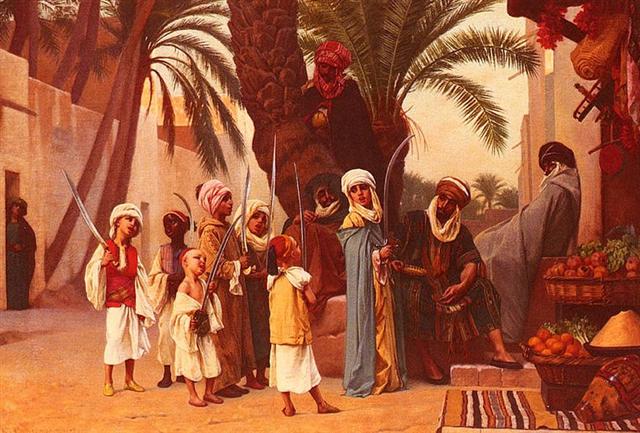
... The First
Point of Perseus was Alseiph (φ),
at the right foot of Andromeda - which is very strange.
And Gb4-5 is equipped with female breasts
...
... You are the
child of my old age. When I had you, no one knew, and what
you have been saying is the truth. Well, as you were formed
out of my topknot you can be Maui tikitiki a Taranga.
So that became his name, meaning Maui-formed-in-the-topknot-of-Taranga.
And this is very strange, because women in those days did
not have topknots. The topknot was the most sacred part of a
person, and only men had them ...
... Ta'aroa
sat in his heaven above the earth and conjured forth gods
with his words. When he shook off his red and yellow
feathers they drifted down and became trees. He created the
first parents, Tumu-nui, Great Foundation, to be the
husband, and Paparaharaha, Stratum Rock, to be the
wife. He put the very essence of himself into their
creation; yet when he commanded them to wed, each refused to
go to the other. So Ta'aroa created other gods and
Atea, Bright Expanse, the Sky-goddess, who dwelt in
darkness in the confined sky Rumia.
By
Papa-tuoi, Thin Earth, Atea was the mother of
children who became artisans for Rai-tupua-nui,
Great-Sky-builder. They assisted him in erecting the ten
heavens above the earth. In the highest of these dwelt the
god Tane, so it was called the
Sky-of-the-sacred-omens of Tane and
Sky-of-the-water-of-life of Tane. The next highest
heaven was called Hiro's Sky-of-prophets.
Atea
then became the wife of Rua-tupua-nui, Source of
Great Growth, and they became the parents of all the
celestial beings, first the shooting stars, then the Moon
and the Sun, next the comets, then the multitude of stars
and constellations, and finally the bright and dark nebulae.
When this tremendous task had been accomplished Atea
took a third husband, Fa'a-hotu, Make Fruitful. Then
occurred a curious event. Whether Atea had wearied of
bringing forth offspring we are not told, but certain it is
that Atea and her husband Fa'a-hotu exchanged
sexes. Then the [male] eyes of Atea glanced down at
those of his wife Hotu and they begat Ru. It
was this Ru who explored the whole earth and divided
it into north, south, east, and west
...
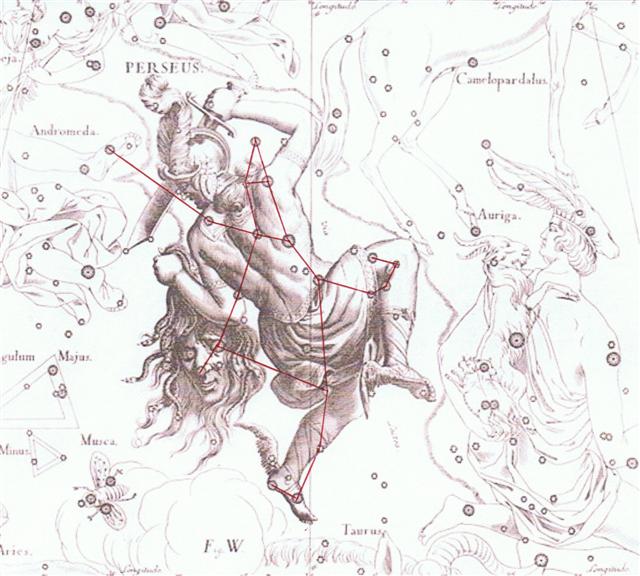
There are 24 glyphs in line Cb1 and we
have to go forward to line Cb2 in order to find Alcyone,
from where sailing safely would begin:
 |
 |
 |
 |
|
Cb2-4 (420) |
Cb2-5 (29) |
Cb2-6 |
Cb2-7 |
|
te ua |
koia ra |
kua tuku ki to mata - ki tona tukuga |
e kiore - henua - pa rei |
|
δ
Persei (54.7) |
Al Thurayya-27 /
Krittikā-3 |
MENKHIB
= ζ Persei (57.6)
PORRIMA (γ Virginis)
|
|
TAU-ONO
(Six Stones)
ATIKS
= ο Persei,
RANA
= δ Eridani (55.1),
CELAENO
(16 Tauri),
ELECTRA
(17),
TAYGETA
(19), ν Persei (55.3),
MAIA
(20),
ASTEROPE
(21),
MEROPE
(23) (55.6) |
Temennu-3
(Foundation Stone)
Hairy Head-18
ALCYONE
(56.1),
PLEIONE
(28 Tauri),
ATLAS
(27) (56.3) |
|
May
14 (*54) |
15
(500) |
16
(136) |
17
(*57) |
... The
turtle got up, went back into the (sea) water, and swam
away. All the kinsmen spoke to you (i.e. Kuukuu):
'Even you did not prevail against the turtle!' They put
the injured Kuukuu on a stretcher and carried him
inland. They prepared a soft bed for him in the cave and
let him rest there. They stayed there, rested, and
lamented the severely injured Kuukuu. Kuukuu
said, 'Promise me, my friends, that you will not abandon
me!' They all replied, 'We could never abandon
you!' They stayed there twenty-seven days in Oromanga.

Everytime
Kuukuu asked, 'Where are you, friends?' they
immediately replied in one voice, 'Here we are!' They
all sat down and thought. They had an idea and Ira
spoke, 'Hey, you! Bring the round stones (from the
shore) and pile them into six heaps of stones!' One of
the youths said to Ira, 'Why do we want heaps of
stone?' Ira replied, 'So that we can all ask the
stones to do something.' They took (the material) for
the stone heaps (pipi horeko) and piled up six
heaps of stone at the outer edge of the cave. Then they
all said to the stone heaps, 'Whenever he calls,
whenever he calls for us, let your voices rush (to him)
instead of the six (of us) (i.e., the six stone heaps
are supposed to be substitutes for the youths). They all
drew back to profit (from the deception) (? ki honui)
and listened. A short while later, Kuukuu called.
As soon as he had asked, 'Where are you?' the voices of
the stone heaps replied, 'Here we are!' All (the youths)
said, 'Hey, you! That was well done!'
...
Once again counting the glyphs we can discern the
outline of a structural pattern:
| Heu
Offspring of parents from two
different tribes, person of mixed
descent, e.g. father Miru, mother
Tupahotu. Heuheu, body
hair (except genitals and armpits). Vanaga.
1. Heheu; ivi heheu, the
cachalot, bone needle; hakaheu,
spade, to shovel, to grub up, to scratch the
ground, to labor; rava hakaheu,
laborious, toilsome. 2. Hakaheu,
affair. Churchill.
M. Heu, to
separate, to pull asunder; the eaves of a
house; heu, a single hair; hau.
to hew; heru, to comb; huru,
hair on the body; down; feathers; maheu,
scattered; maheuheu, shrubs;
mahuru, scrub; heuea, to be
separated. Text Centre. |
 |
 |
 |
 |
 |
 |
|
*Ca14-18 |
*Ca14-19 |
*Ca14-20 |
*Ca14-21 (384) |
*Ca14-22 |
*Ca14-23 |
|
te honu paka |
te henua |
honu kau |
te mata |
te honu |
kua heheu |
|
1h (15.2)
β Phoenicis (15.1), υ Phoenicis, ι Tucanae
(15.6), η Ceti, ζ Phoenicis (15.7) |
Al Batn Al Hūt-26 /
Revati-28 /
1-iku
MIRACH
(Girdle)
= β Andromedae,
KEUN
MAN MUN (Camp's South Gate)
= φ Andromedae (16.0),
ANUNITUM
= τ Piscium (16.5),
REVATI
= ζ Piscium (16.9) |
ν Phoenicis (17.4), κ Tucanae (17.6) |
no star listed (18) |
ADHIL (Garment's Trail)
= ξ Andromedae (19.3), θ Ceti (19.7) |
KSORA (Knee)
= δ Cassiopeiae (20.1), ω Andromedae (20.6),
γ Phoenicis (20.8) |
|
April
5 |
6 |
7 |
8 (464) |
9 |
10 (100) |

 |
 |
 |
 |
 |
|
Cb1-1 |
Cb1-2 |
Cb1-3 |
Cb1-4 (396) |
Cb1-5 |
|
E tupu - ki roto |
o te hau tea |
ki te henua - te maro |
rutua |
|
Al
Sharatain-1 /
Ashvini-1 /
Bond-16 /
Mahrū-sha-rishu-ku-1
(Front of the
Head of Ku)
SEGIN
= ε Cassiopeia,
MESARTHIM
= γ Arietis, ψ Phoenicis (27.2),
SHERATAN
= β Arietis, φ Phoenicis (27.4) |
ι Arietis (28.0), λ Arietis (28.2), υ Ceti
(28.8) |
ALRISHA (The Knot)
= α Piscium, χ Phoenicis (29.2),
ALAMAK
= γ Andromedae (29.7) |
Arku-sha-rishu-ku-2 (Back of the Head of
Ku)
2h (30.4)
κ Arietis (30.3),
HAMAL
= α Arietis (30.5)
ALKES (α Crateris)
|
η Arietis (31.9) |
|
April 17 (107) |
18 |
19 (*29) |
20
(*396 = *30 + 366) |
21 (111) |
 |
 |
 |
 |
 |
|
Cb1-6 (398) |
Cb1-7 |
Cb1-8 |
Cb1-9 |
Cb1-10 |
|
te pahu |
rutua te maeva |
atua rerorero |
atua hiko ura |
hiko o tea |
|
ξ¹ Ceti (32.1) |
θ Arietis (33.3),
MIRA
= ο Ceti (33.7) |
no star listed (34) |
ξ Arietis (35.0), ρ Ceti (35.4), ξ² Ceti
(35.9) |
σ Ceti (36.9) |
|
April
22 |
23 |
24 |
25 (400 - 285) |
26 (*36) |
Baten Kaitos, the Belly of the Fish,
rose together with Polaris and this could be
imagined as a place corresponding to the
winter solstice. Or to the cave into which the badly injured
Kuukuu had been carried by his 6 comrades. April
(Welo on Hawaii) was a vero month and
so was Makali'i.
|
Matariki i nika: |
|
The '6 stones' (Tau-ono) - the
Pleiades (Mata-riki, the Small Eyes)
- returned to visibility.
Breaking of the Coco-nut. |
November 18 (*242)
Hua tapu (Welehu) |
|
The cycle of Lono was beginning. |
November 28 (332) |
|
Splashing water
(Hi'uwai).
Cycle of Lono completed. |
December 20 (354 = 6 * 59) |
|
Kali'i (Battle
of the King). |
December 21 (*275 = *242 + 33)
(Makali'i 16) |
|
The House (Haumea) encircled by
Kahoali'i
in
the Net of Maoloha.
Lono sacrificed.
Makahiki effigy dismantled and hidden
away.
Eye swallowed by Death-is-Near,
Koke-na-make = Kahoali'i (Living God,
the Companion of the King). |
December 23 (357)
(Makali'i 18) |
|
A tribute-canoe of offerings to Lono
was set adrift for Kahiki, homeland
of the gods. |
A woman had to fill
the vacancy and Andromeda was the natural choice
(possibly corresponding to Atea). She would complete the cycle
(haka-taka) by giving birth to a
new little one. According to Manuscript E (s)he seems
to have been Nga Tavake A Te Rona.
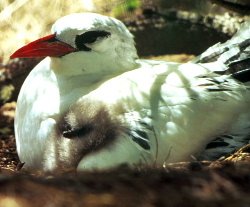
|
Rona
Figure made of wood, or
stone, or painted, representing a bird, a
birdman, a lizard, etc. Vanaga. Drawing,
traction. Pau.: ronarona, to pull one
another about. Churchill.
While the rongorongo signs
(rona) are generally 'carved out,
incised' (motu), ta implies an
incision ('cutting, beating') as well as the
process of applying signs to the surface
with the aid of a dye ... RAP. rona
means primarily 'sign' (an individual sign
in the Rongorongo script or a painted or
carved sign made on a firm background, such
as a petroglyph), but also 'sculpture' (made
from wood or stone, representing animals of
hybrid creatures) ... rona (lona)
implies the idea of 'maintaining a straight
line' with ropes and nets and also the
maintaining of a steady course (in MAO. and
TUA.).
Te Rona is the name
of a star in TUA., which Makemson (1941:251)
derives from the mythical figure of 'Rona',
who is connected with the moon and is
considered to be the father of (the moon
goddess) Hina (for this role in MAO.,
see Tregear 1891:423). From west Polynesia
come totally different meanings. Interesting
perhaps is FIJ. lona, 'to wonder what
one is to eat, fasting for the dead.' ...
Barthel 2 |
 |
 |
 |
 |
|
Cb2-4 (420) |
Cb2-5 (29) |
Cb2-6 |
Cb2-7 |
|
te ua |
koia ra |
kua tuku ki to mata - ki tona tukuga |
e kiore - henua - pa rei |
|
δ
Persei (54.7) |
Al Thurayya-27 /
Krittikā-3 |
MENKHIB
= ζ Persei (57.6)
PORRIMA (γ Virginis)
|
|
TAU-ONO
(Six Stones)
ATIKS
= ο Persei,
RANA
= δ Eridani (55.1),
CELAENO
(16 Tauri),
ELECTRA
(17),
TAYGETA
(19), ν Persei (55.3),
MAIA
(20),
ASTEROPE
(21),
MEROPE
(23) (55.6) |
Temennu-3
(Foundation Stone)
Hairy Head-18 (Cockerel)
ALCYONE
(56.1),
PLEIONE
(28 Tauri),
ATLAS
(27) (56.3) |
|
May
14 |
15
(500) |
16
(136) |
17 |

There must, of course, have been several
memorable and complementary descriptions of the time before Alcyone arrived. Metoro said te pahu
at the glyph before Mira, in right ascension day 366 + 32
counted from
0h in the previous year. His expression could have been
intended to point at the enclosure inside a 'coffin'
(sarco-phagus, meat-eater).
... But Osiris's evil brother, Set,
whose sister-wife was the goddess Nephtys, was
mortally jealous both of his virtue and of his fame,
and so, stealthily taking the measure of his good
brother's body, he caused a beautifully decorated
sarcophagus to be fashioned and on a certain
occasion in the palace, when all were drinking and
making merry, had it brought into the room and
jestingly promised to give it to the one whom it
should fit exactly. All tried, but, like the glass
slipper of Cinderella, it fitted but one; and when
Osiris, the last, laid himself within it,
immediately a company of seventy-two conspirators
with whom Set had contrived his plot dashed forward,
nailed the lid upon the sarcophagus, soldered it
with molten lead, and flung it into the Nile, down
which it floated to the sea ...
|
Pahu
Drum. Pahu-rutu-roa =
Long-beating-drum. Barthel. M. Pahū.
Tree gong. Starzecka.
Pahu
uma, coffin; in
modern usage, any sort of jar. Pahupahu
= To dig a hole. Vanaga.
A trough, barrel, cask,
cradle, drum, chest, box;
pahu nui,
a kettle;
pahu oka, a drawer;
pahu papaku,
coffin; pahu
rikiriki, sheath;
pahu viriviri,
hogshead.
Pahupahu, box. Churchill.
A trough, barrel, cask,
cradle, drum, chest, box;
pahu nui,
a kettle;
pahu oka, a drawer;
pahu papaku,
coffin; pahu
rikiriki, sheath;
pahu
viriviri, hogshead;
pahupahu,
box. P Mgv., Ta.:
pahu,
a drum. Mq.:
pahu, a drum, a large
cylindrical container. (To.:
bahu,
a hollow tree set in water as a filter.)
Sa.: pusa,
a box. To.:
buha, id. Fu.:
pusa,
id. Niue:
puha, id. Pau.:
puha,
id. Pahuahi,
lantern, beacon.
Paukumi,
closet, cupboard.
Pahupopo,
a mould;
pahupopokai, cupboard for food.
Pahure:
1. To sweep everything away. 2. To wound, to
lacerate, scar, bruise, lesion, sore;
pahurehure,
to wound, to scratch;
hakapahure,
to wound. T Pau.:
pahure,
to be skinned;
pahore, to peel off, to scale.
Mgv.: pahore,
to cut off, to chop, to slice. Ta.:
pahore,
to flay, to skin. Churchill 2. |
This chest would save his body,
transfer it over the winter waters to the next land, where in
due time the box would be turned into a cradle (pahu),
a house, or similar.
... The
first god's house in the temple was the body of
Ta'aroa's own person, and it became a model for
all other god's houses. One day Ta'aroa let
himself go into a trance and his spirit stood away
in space while his body floated in the sea, then he
said to his daughters: 'Oh, girls! How many canoes
are there at sea?' And the daughters replied: 'It is
like one, it is like one!' Then Ta'aroa's
spirit said: 'Who can it be?' And they answered: 'It
is thyself assuredly!' ...
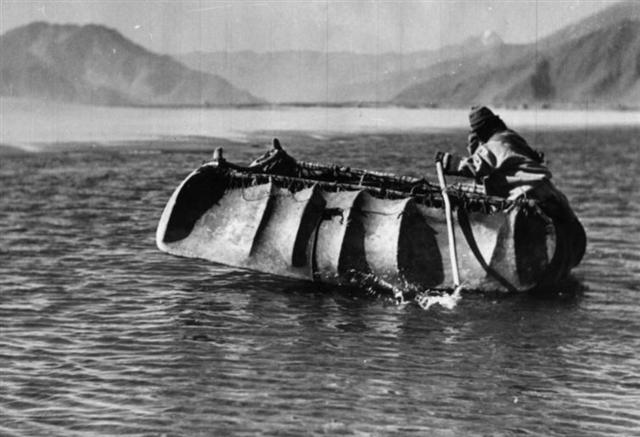
...After
the food supplies had been brought on land, the two
rulers, the king and the queen said, 'Drag the
canoes on land and take them apart (so the wood can
be used) to build houses and cover the roofs!' They
dragged the two canoes on land and took them apart.
After they had finished disassembling the canoes,
Nuku covered all the houses ...
[Manuscript E: p. 84]
... Llew
[Lion, cfr German
Löwe] visits the Castle of Arianrhod in a coracle of weed
and sedge. The coracle is the same old harvest
basket in which nearly every antique Sun-god makes
his New Year voyage; and the virgin princess, his
mother, is always waiting to greet him on the bank
...

...Then the big Fish did swallow him, and he had
done acts worthy of blame.
Had it not been that he (repented and) glorified
Allah,
He
would certainly have remained inside the Fish
till the Day of Resurrection. - Qur'an,
chapter 37 (As-Saaffat),
verse 139–144.
But
We cast him forth on the naked shore in a state
of sickness,
And We caused to grow, over him, a spreading
plant of the gourd kind.
And We sent him (on a mission) to a hundred
thousand (men) or more.
And they believed; so We permitted them to enjoy
(their life) for a while. - verse 145–148 ...
The blinking
Mira could have served as a Sign that the paws
of the Sea Beast had reached Land. The synodic
cycle of Jupiter was 398 days and Cb1-6 could
have illustrated where it was time to build a
house, to take the canoe of the great voyager
apart.
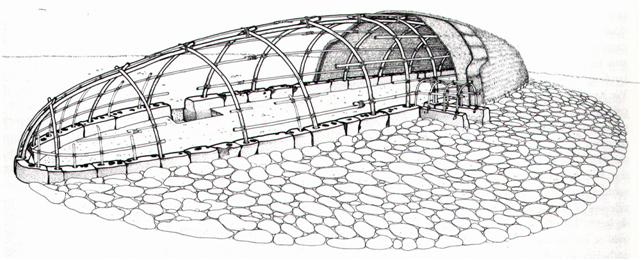
Possibly Metoro alluded to Ru
- who explored the whole earth and divided
it into north, south, east, and west
-
when he said rutua
at Cb1-5.
|
Ru
A chill, to shiver, to
shudder, to quake; manava ru, groan.
Ruru, fever, chill, to shiver, to
shake, to tremble, to quiver, to vibrate,
commotion, to apprehend, moved, to agitate,
to strike the water, to print; manava
ruru, alarm; rima ruru, to shake
hands. P Pau.: ruru, to shake, to
tremble. Mgv.: ru, to shiver with
cold, to shake with fever, to tremble. Mq.:
ú, to tremble, to quiver. Ta.:
ruru, to tremble. Churchill.
Mgv.: eager, in haste,
impatient. Ta.: ru, impatience,
haste. Churchill.
Ruru, to tremble,
an earthquake. Sa.: lūlū,
lue,
to shake. To.: luelue,
to roll; lulu,
to shake. Fu.: lulū,
to tremble, to shake, to agitate. Niuē:
luelue,
to shake; lūlū,
to shake, to be shaken. Nuguria:
ruhe,
motion of the hands in dancing;
luhe henua,
an earthquake. Uvea, Ha.: lu,
lulu,
lululu,
to shake, to tremble, to flap. Fotuna:
no-ruruia,
to shake. Ma.: ru,
ruru,
to shake, an earthquake. Ta., Rarotonga,
Rapanui, Pau.: ruru,
to shake, to tremble. Mgv.: ru,
to tremble; ruru,
to shake. Mq.: uu,
to shake the head in negation;
uuuu, to
shake up. Uvea: ue i,
to shake; ueue,
to move. Rapanui: ueue,
to shake. Churchill 2. |
|
Tua
1. Back, shoulder, tu'a
ivi, shoulder blade; tu'a ivi more,
lumbago; moa tu'a ivi raá,
'sun-back chicken': chicken with a yellow
back which shines in the sun. 2. Behind (a
locative adverb, used with i, ki, a, o,
etc). Tu'a-papa, pelvis, hips.
Vanaga.
1. Behind, back, rear;
ki tua, after; o tua, younger;
taki tua, perineum. 2. Sea urchin,
echinus. The word must have a germ sense
indicating something spinous which will be
satisfactorily descriptive of the sea urchin
all spines, the prawn with antennae and thin
long legs, and in the Maori the shell of
Mesodesma spissa. Tuaapapa,
haunch, hip, spine. Tuahaigoigo,
tattooing on the back. Tuahuri,
abortion; poki tuahuri, abortive
child. Tuaivi, spine, vertebræ,
back, loins; mate mai te tuaivi,
ill at ease. Tuakana,
elder, elder brother; tuakana
tamaahina,
elder sister. Tuamouga,
mountain summit. Tuatua,
to glean. Mgv. tua: To fell,
to cut down. Ta.: tua, to cut. Mq.:
tua, to fell, to cut down. Ma.:
tua, id. Tuaki, to disembowel.
Ma.: tuaki, to clean fish. Tuavera,
the last breadfruit spoiled by the wind.
Ta.: tuavera, burnt by the sun.
Churchill. |
|
Rutu
1. To read, to recite, to
pronounce words solemnly; he-rutu i te
kohau motu, to read the rongorongo
tablets; hare rutu rogorogo mo hakama'a
ki te ga poki ite kai, i te rogorogo,
rongorongo school, house in which children
were taught reading and writing the
rongorongo signs. 2. To pelt with stones. 3.
To gather in great numbers (of people).
Vanaga.
Sound. Rutu-rongorongo
= the sound of recitation. Barthel. T. Beat.
Henry. To recite; tae rutu,
irreverence. Churchill.
Pau.: rutu, a drum.
Mgv.: rutu, to beat, to cause to
resound. Ta.: rutu, a drum, to drum.
Mq.: utu, to drum. Sa.: lutu,
to shake a rattle. Churchill. |
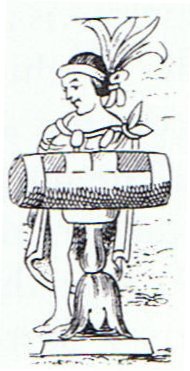
... The
tun glyph was identified as a wooden drum by
Brinton ... and Marshal H. Saville immediately
accepted it ... [the figure above] shows the Aztec
drum representation relied on by Brinton to
demonstrate his point. It was not then known that an
ancestral Mayan word for drum was *tun:
Yucatec tunkul 'divine drum' (?); Quiche
tun 'hollow log drum'; Chorti tun 'hollow
log drum' ...
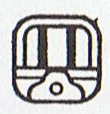
... The [tun]
glyph is nearly the same as that for the month
Pax ... except that the top part of the latter
is split or divided by two curving lines. Brinton,
without referring to the Pax glyph,
identified the tun glyph as the drum called
in Yucatec pax che (pax 'musical
instrument'; che < *te 'wooden).
Yucatec pax means 'broken, disappeared', and
Quiche paxih means, among other things,
'split, divide, break, separate'. It would seem that
the dividing lines on the Pax glyph may have
been used as a semantic/phonetic determinative
indicating that the drum should be read pax,
not tun ... Thus, one may expect that this
glyph was used elsewhere meaning 'to break' and
possibly for 'medicine' (Yuc. pax, Tzel.,
Tzo. pox)
...
It should be added
that tun was also the period of 18 months, or
360 days ...
 |
 |
 |
 |
|
1 Pop |
2 Uo |
3 Zip |
4
Zotz (80) |
 |
 |
 |
 |
|
5
Tzek |
6
Xul |
7
Yaxkin |
8
Mol (160) |
 |
 |
 |
 |
|
9
Ch'en |
10
Yax |
11
Sac |
12
Ceh (240) |
 |
 |
200 |
 |
|
13
Mac |
14
Kankin |
15
Moan (300) |
|
BREAK (paxih) |
 |
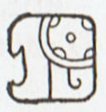 |
 |
 |
|
16 Pax (320) |
17
Kayab |
18 Cumhu |
19
Vayeb (365) |
... The
ground, the food-giving earth, was Pachamama;
the moon, Paximama ...
|






















































